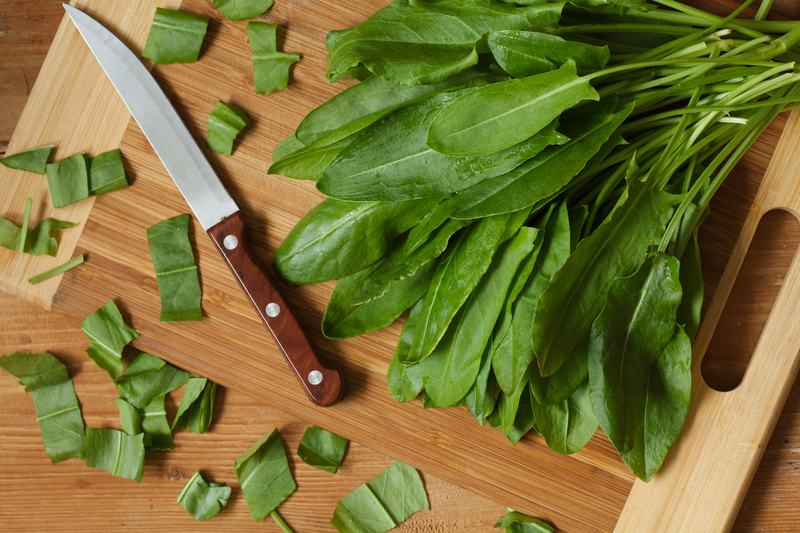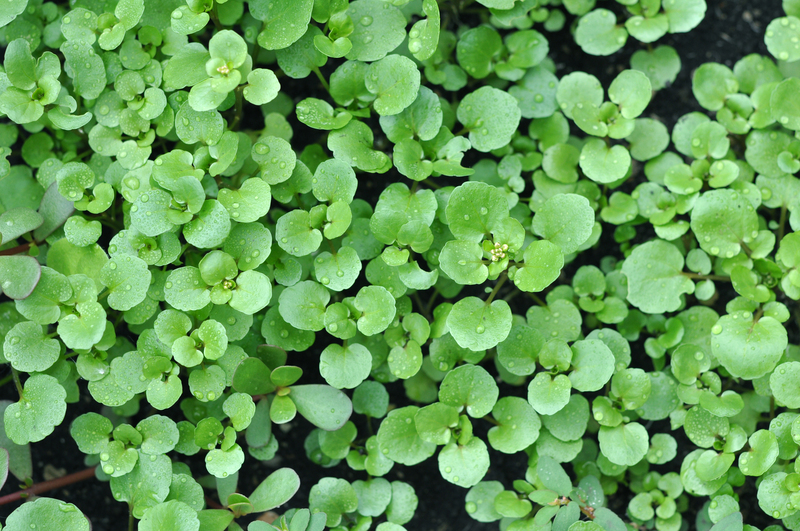Battle Weeds with These 3 Powerful Techniques
Posted on 12/09/2025
Battle Weeds with These 3 Powerful Techniques
Are weeds taking over your garden, lawn, or yard? Effective weed control is essential for keeping your landscape healthy and beautiful. Weeds not only hog nutrients, water, and sunlight meant for your precious plants but also can ruin the aesthetics of your outdoor spaces. If you're ready to reclaim your garden, fight back with these three powerful weed management techniques. Read on to learn how to identify, control, and prevent weeds using the best contemporary methods available.

Why Effective Weed Control Matters
Unchecked weeds can quickly become a gardener's nightmare. They germinate faster than cultivated plants, often thrive in poor soils, and sometimes produce allelopathic chemicals that slow the growth of nearby flowers or vegetables. Weed proliferation can compromise plant health, reduce crop yields, and increase the need for labor and chemical controls.
- Compete for Resources: Weeds rob your desired plants of sunlight, water, and nutrients.
- Host Pests and Diseases: Many weeds shelter pests and can harbor harmful diseases.
- Impact Appearance: Overgrown weeds make gardens look neglected and harm property value.
Luckily, with the right weed management techniques, you can efficiently rid your landscape of these persistent invaders. Let's explore three of the most effective approaches.
1. Physical Techniques: Manual and Mechanical Weed Removal
The Benefits of Physical Weed Control
Manual and mechanical methods are among the oldest and most reliable weed elimination techniques. By removing weeds from the root, you prevent regrowth and avoid soil contamination from synthetic chemicals. Physical weed management is favored by organic gardeners and anyone aiming for a safe, eco-friendly solution.
How to Remove Weeds by Hand
- Water the Soil: Always pull weeds after watering or rain; damp soil makes pulling easier and ensures you get the whole root.
- Use the Right Tools: Equip yourself with a trowel, hori-hori knife, or specialized weed puller for deeper-rooted or stubborn varieties.
- Go for the Root: Grasp weeds at the base and gently pull to avoid breaking roots, which can resprout.
Mechanical Methods: Weed Control Tools
Cultivators, hoes, and even flame weeders can help you combat weed overgrowth, especially in larger areas like lawns, vegetable beds, or driveways.
- Hoeing: Slicing off weeds at the soil line is quick and effective for annual weeds.
- Cultivating: Aerates the soil and exposes weed roots to the elements, which dries and kills them.
- Flame Weeders: These torches use high heat to kill weeds without damaging nearby plants--ideal for cracks and walkways.
Manual and mechanical weed removal is best done early in the season or after rainfall. Consistency is key to keeping weeds under control.
2. Mulching: Smothering Weeds Before They Emerge
How Mulch Controls Weeds
Mulching is one of the most effective and low-maintenance weed prevention techniques. A thick layer of organic or inorganic mulch blocks sunlight, preventing weed seeds from germinating and growing. Suppressing weed growth with mulch also helps the soil retain moisture, moderates temperature, and eventually improves soil health as it decomposes.
Types of Weed-Suppressing Mulch
- Organic Mulch: Includes straw, bark chips, wood shavings, compost, and shredded leaves. Organic options break down over time and enrich the soil.
- Inorganic Mulch: Such as black plastic, landscape fabric, and gravel. These provide longer-lasting weed barriers, especially in walkways and around shrubs.
How to Apply Mulch for Maximum Weed Control
- Clear Existing Weeds: Pull or hoe out weeds before applying mulch.
- Apply Sufficient Thickness: Spread mulch 2-4 inches deep for best results.
- Keep Mulch Away from Stems: Prevent rot by keeping mulch a few inches from plant bases.
Replenish organic mulch yearly for ongoing weed suppression and soil enrichment.
3. Smart Herbicide Use: Targeted, Responsible Chemical Weed Management
When to Use Herbicides
While manual and cultural methods are generally preferred, sometimes stubborn or invasive weeds require chemical weed control. The key is responsible use: choose the right product and apply it correctly to maximize effectiveness while minimizing environmental impact.
- Pre-emergent Herbicides: These form a barrier that stops seedlings from sprouting. Apply before weeds appear, typically in early spring.
- Post-emergent Herbicides: Use on actively growing weeds. Choose selective types for lawns or non-selective for driveways and patios.
- Spot Treatment: Apply herbicides directly to weeds instead of blanket spraying to avoid harming desirable plants.
Eco-Friendly and Organic Options
Increasingly, gardeners are turning to natural weed killers such as vinegar-based sprays, citrus oil, or corn gluten meal (a pre-emergent). While they may be less potent than synthetic herbicides, organic options are safer for children, pets, and beneficial insects.
Tips for Safe Herbicide Application
- Read Labels Carefully: Always follow the label instructions for safe and effective use.
- Choose the Right Time: Apply on dry, calm days to reduce drift onto other plants.
- Protect Nearby Plants: Use shields or cardboard to cover desirable plants during application.
- Wear Protective Gear: Gloves, eye protection, and long sleeves are recommended.
Responsible herbicide use is a powerful option in your weed prevention toolkit, especially against persistent perennial weeds.
Bonus: Preventive Weed Management Strategies
Don't Let Weeds Get Started
The best way to keep your landscape weed-free is to prevent weeds from gaining a foothold in the first place. Combine these weed prevention methods with your existing gardening habits for lasting results.
- Dense Planting: Plant groundcovers, grass, or perennials closely to shade the soil and prevent weed establishment.
- Regular Maintenance: Pull weeds as soon as they appear--don't let them flower and set seed.
- Healthy Soil: Amend your soil with compost and organic matter, making it more fertile for your chosen plants and less inviting for opportunistic weeds.
- Clean Tools and Footwear: To avoid spreading weed seeds, always clean your gardening tools and shoes after working in infested areas.

Conclusion: Master the Art of Weed Management
Battling weeds can feel like an endless struggle, but armed with the right strategies, you can reclaim your garden and maintain stunning outdoor spaces. By combining manual and mechanical removal, smart mulching techniques, and responsible herbicide use, you're set to face even the toughest weed infestations. Remember, consistency and early intervention are crucial--so don't let those unwanted guests take root!
For more tips on weed suppression, organic gardening, and landscape maintenance, stay tuned to our blog. Take control of your garden, and let your chosen plants--not the weeds--thrive.
Frequently Asked Questions: Weed Control
- What is the most effective way to remove weeds permanently?
Combining manual removal, preventive mulching, and selective herbicide use offers the most comprehensive long-term control. - How often should I mulch for weed control?
Organic mulch should be replenished once or twice a year for ongoing weed suppression. - Are there any natural methods to prevent weeds?
Yes! Regular hand weeding, dense planting, and applying organic mulch are excellent natural weed barriers.
Take the First Step: Start Battling Weeds Today
Don't let weeds dominate your beautiful landscape. Battle weeds with these powerful techniques and restore health and order to your garden. Whether you choose to weed by hand, lock them out with mulch, or target them with herbicides, proactive action brings the best results. Start today and enjoy a weed-free outdoor sanctuary all season long.

